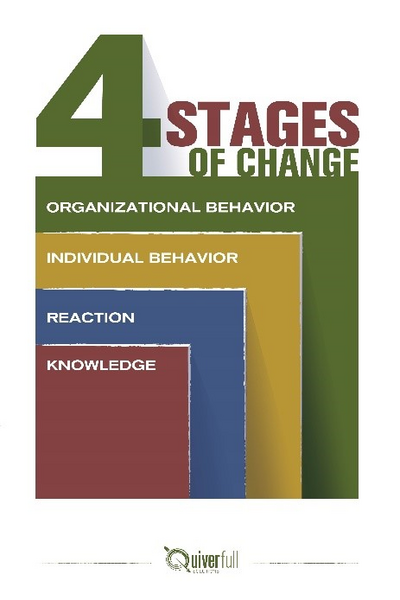ATD Blog
Change Management Lessons From Reading and App Updates
Tue Feb 19 2019

We’ve all been there: We’re ready to use one of our favorite business or social media apps on any one of our devices, only to realize there is a necessary update. This is fine. We tap “update all” and wait patiently for our beloved apps to update so we can go on with our lives. The moment comes for us to use our newly updated applications—only to find out the update is an update of the user interface! All your eye and finger muscle memory is now null and void as you have to relearn the locations of your favorite functions of your favorite apps!
“Why do they do this?” “It wasn’t broken, why did they have to fix it?!” “I don’t have time for this.”
With each update we experience an abbreviated Kubler-Ross change curve. We experience initial shock and denial of the updates, and become frustrated with initial attempts at the new user interface. That frustration eventually turns into a mild depressed state to the point where we must attempt at learning the new interface. After a few hours or days, we learn that the new updates are beyond simply a user interface. There are added features that make our lives more efficient and/or pleasurable (depending on the app). Once we realize this, we accept the updates and integrate them back into our lives. We fall in love with our favorite business and social media apps all over again . . . until the next update, of course.
Over the holidays, I read David Goggins’s new book, Can’t Hurt Me. It’s a phenomenal story of personal mental toughness that leads to physical, emotional, and even spiritual victories. The mental toughness came through enduring suffering. The whole theme of Goggins’s book is that people cannot get better without enduring the suffering needed to force your mind, body, spirit, and emotions to be better. I experienced an “app update” similar to that described above, and learned within a few minutes that the new user interface was required to enable all the new efficiencies for one of my favorite applications. The benefits of the new features of the app made the suffering of learning them well worth the time.
Clearly the suffering of learning a new app interface is not the same as Mr. Goggins's having to lose over 100 pounds in three months to just get accepted into U.S. Navy SEALs training (yes, you read that right), but both serve to remind us of a valuable organization development and change management principle: Oorganizational leadership should not back away from implementing changes just because it will make work harder on their employees for a while. As a leadership team, you must make tough decisions. Often those decisions require your employees to change a process, product offering, or even employee benefit. Ultimately, if you believe a change is what is needed to make your organization improve, be direct in your communication of that change. Do not be afraid to tell your employees their daily work will be disrupted, and thank them ahead of time for their efforts. That will be much better received than soft-selling a change initiative by praising all the benefits without acknowledging the temporary disruption.
The concept of “suffering” during a change initiative has a direct impact on all four stages of my change model (see figure below) in these ways:

Knowledge Stage—By directly communicating the disruption, employees are mentally prepared. Also, if you exhaustively explain the benefits of the change initiative to the overall organization, most employees will be willing to endure the disruption for the reward of the benefits in the end.
Reaction Stage—Assuming an effective Knowledge Stage initiative was implemented, employees can be prepared for the disruption, and most will endure and embrace the disruption in exchange for the benefit. An organization may even have “force multipliers” that reinforce the benefits during the disruption—an added benefit.
Individual Behavior—As more and more employees begin to realize the benefits of the change initiative for themselves, the organization will start to see more and more acceptance of the change. Employees will recognize the need for the disruption to realize the benefit, and behavior and performance will improve.
Organizational Behavior—Ultimately, once most employees have embraced and implemented the change, organization behavior will improve and realize the benefit.
No one said improvement was easy. Our lives get disrupted all the time; we endure suffering in minor and major ways. Sometimes our lives are disrupted with an app update, and sometimes we need to lose 100 pounds in three months like Mr. Goggins. Disruption happens—and it’s OK to call it out for what it is.
